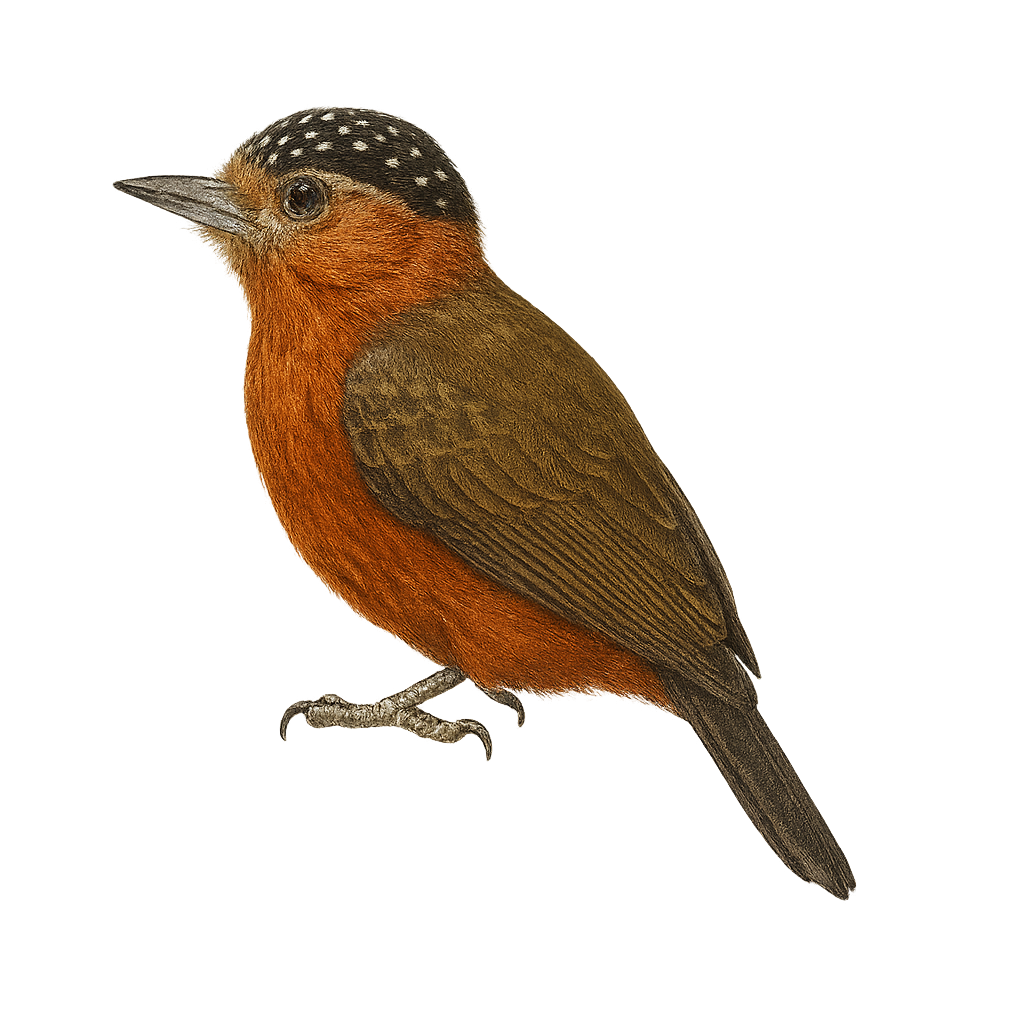Your wildlife photography guide.
Explore the rufous-breasted piculet in detail, study its behavior, prepare your shots.
Where to observe and photograph the rufous-breasted piculet in the wild
Learn where and when to spot the rufous-breasted piculet in the wild, how to identify the species based on distinctive features, and what natural environments it inhabits. The WildlifePhotographer app offers tailored photography tips that reflect the rufous-breasted piculet’s behavior, helping you capture better wildlife images. Explore the full species profile for key information including description, habitat, active periods, and approach techniques.
Rufous-breasted Piculet
Scientific name: Picumnus rufiventris

IUCN Status: Least Concern
Family: PICIDAE
Group: Birds
Sensitivity to human approach: Suspicious
Minimum approach distance: 5 m
Courtship display: September to October
Incubation: 13-15 jours
Hatchings: September to November
Habitat:
Tropical forests, subtropical forests, forest edges
Activity period :
Primarily active during the day, with peak activity in the morning and late afternoon.
Identification and description:
The Rufous-breasted Piculet is a small bird from the Picidae family, primarily found in the tropical and subtropical forests of South America. It is characterized by its rufous-brown belly and black-and-white patterns on its back and head. Measuring about 10 cm in length, it is one of the smallest members of its family. Its short, pointed beak is well-suited for its diet, which mainly consists of insects and larvae found by pecking at tree bark. Often seen in small groups or pairs, it moves nimbly through dense foliage. Though discreet, its high-pitched, repetitive call makes it identifiable to those who listen closely.
Recommended lens:
400 mm – adjust based on distance, desired framing (portrait or habitat), and approach conditions.
Photography tips:
To photograph the Rufous-breasted Piculet, it's advisable to use a telephoto lens of at least 400mm to capture precise details without disturbing the bird. Look for dense forest areas where they are active, especially in the morning. Be patient and listen for their distinctive call to locate them. Use a tripod to stabilize your camera, especially in low light conditions. Try to capture images when the bird is in motion to showcase its natural behavior.
The WildlifePhotographer App is coming soon!
Be the first to explore the best nature spots, track rutting seasons, log your observations, and observe more wildlife.
Already 1 430 wildlife lovers subscribed worldwide

